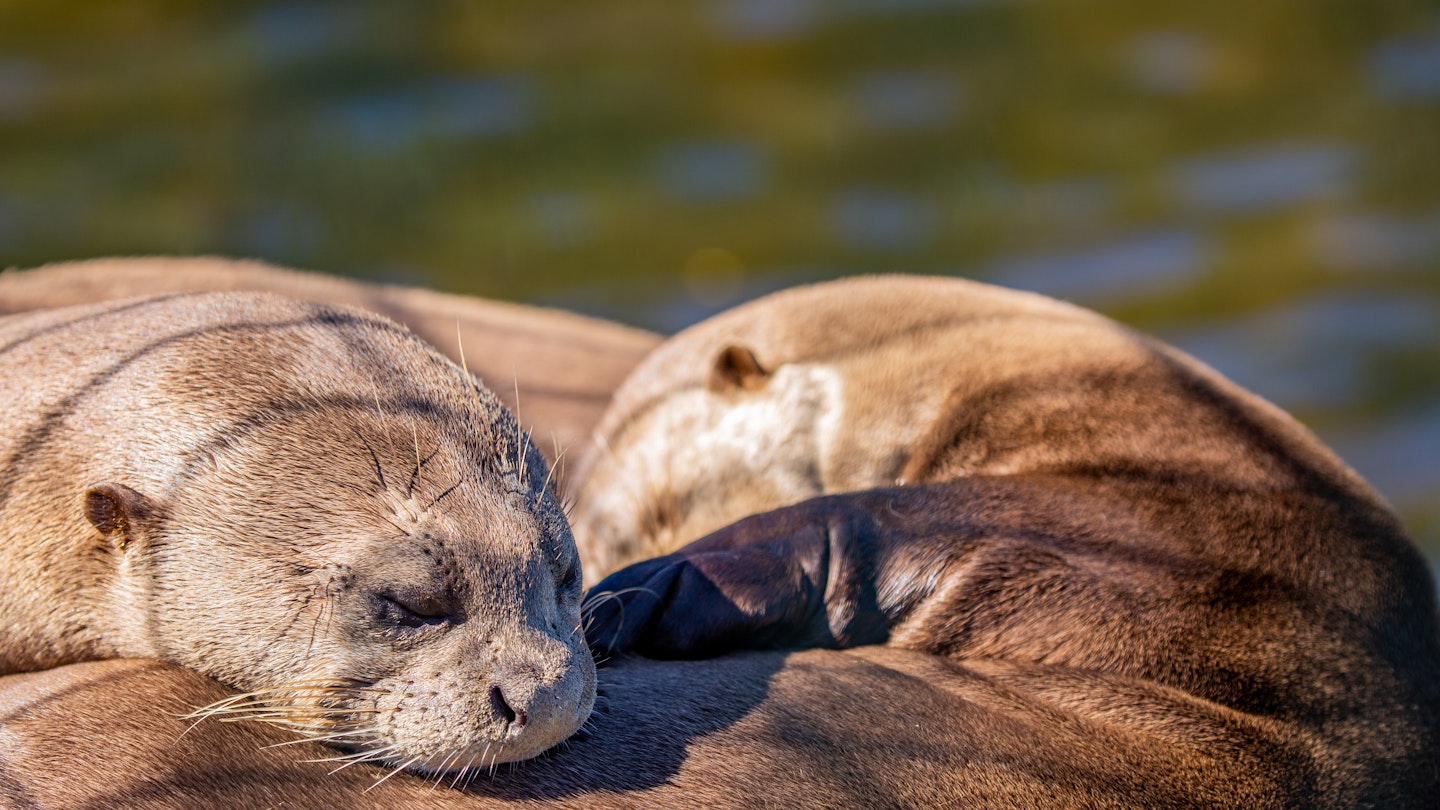Giant River Otters Return to Argentina’s Iberá Wetlands
Conservationists in Argentina are celebrating the birth of three giant river otter cubs, a remarkable event given that this species was classified as extinct in Argentina. This positive development is the result of a significant rewilding project in the country’s wetlands, which not only promotes species recovery but also enhances sustainable ecotourism opportunities in the region.
Historic Birth in Iberá Wetlands
After decades of absence, the cubs were born in May in the Iberá wetlands, located in northeast Argentina. This historic birth is part of a concerted effort by the local Corrientes province government, the National Parks Administration, and the Rewilding Argentina Foundation, founded by Kris and the late Doug Tompkins to restore wild areas across Argentina and Chile using funds from their retail companies.
Hope for the Giant Otter Species
“These three cubs represent a beacon of hope for the recovery of a species in Argentina,” stated Talía Zamboni, a biologist with Rewilding Argentina. “The project in Iberá is unique; never before have there been attempts to reintroduce the giant otter to an area from which it disappeared due to human activities.”

The Importance of Giant Otters
The giant otter, or choker wolf, is the largest otter species, reaching lengths of about six feet (1.8 meters). Once prevalent in the Amazon Basin, this aquatic predator has suffered drastic population declines due to hunting and habitat destruction, rendering it endangered globally and extinct in both Argentina and Uruguay.
Recently, however, signs of recovery have emerged. In May, a giant river otter was sighted in the wild for the first time in 40 years at Parque Nacional El Impenetrable, a restored wilderness area in the Gran Chaco forest. This milestone was quickly followed by the birth of the otter cubs in Iberá Park.
Ecotourism Potential in Iberá
Argentina’s environment minister Juan Cabandié noted that species reintroduction not only fosters ecological balance but also promises economic opportunities through wildlife observation ecotourism. This activity has become a leading economic driver for the Province of Corrientes, nurturing local pride and identity and reinstating species that are integral to the region’s culture.
The giant otter plays a crucial role as a top predator in the wetlands of northern Argentina, thereby maintaining the ecosystem’s health. Although further studies remain necessary, experts believe that reintroducing this species will significantly affect the ecosystem structure by regulating populations and balancing the food web.

Wider Conservation Efforts in Argentina
The giant river otters are part of a broader initiative by Rewilding Argentina, which aims to reintroduce several animal species to their former habitats in the Iberá wetlands. These species include jaguars, marsh deer, red-and-green macaws, anteaters, lowland tapirs, yellow anacondas, black caimans, and collared peccaries.
The Iberá wetlands, recognized as one of the largest freshwater reserves globally, host over 4000 species of flora and fauna, representing 30% of Argentina’s total biodiversity. This area, once in danger, has transformed into a vibrant ecotourism destination, offering visitors wildlife viewing, nature hikes, and boat excursions in stunning lagoons and waterways.
Legislation Supporting Marine Conservation
As conservationists rejoice in the north, other significant environmental changes are underway in the south. In June, Tierra del Fuego, Argentina’s southernmost province, enacted a ban on salmon farming in open pen nets. This pivotal decision aims to safeguard the delicate marine ecosystems in the province, which houses half of Argentina’s kelp forests, marking the country as the first to implement such a legislative measure.
This historic move has been championed by community advocates in Tierra del Fuego, significantly benefiting grassroots activists dedicated to preserving the marine life at the southernmost tip of South America. It poses a particularly important victory for Rewilding Argentina, which focuses on protecting Peninsula Mitre and its wildlife, including endangered species like the Southern river otter, humpback whale, and Southern steamer duck.
Future Perspectives
In neighboring Chile, there is optimism that similar bans on salmon farming might be considered in areas heavily impacted by this industry, particularly the regions of Los Lagos and Magallanes. Such initiatives indicate a growing recognition of the importance of sustainable practices for the preservation of biodiversity.
David Alday, a member of the Yagán community (the original inhabitants of Tierra del Fuego), expressed hope for the future, emphasizing that these protective measures will result in globally beneficial outcomes. “I envision an archipelago filled with abundant biodiversity, surrounded by national parks,” he stated, highlighting the potential for ecological restoration in the region.





